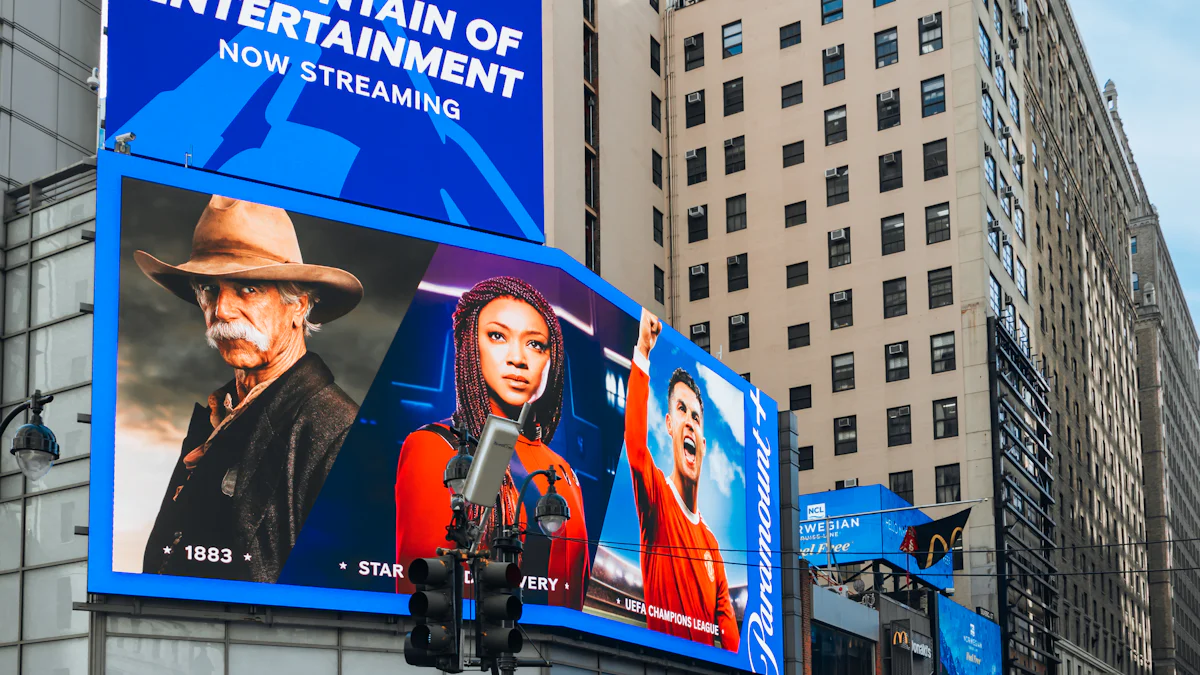
Navigating Advertising Trends
In this comprehensive 2024 Guide to Transit Advertising, we aim to explore the effectiveness of transit advertising in comparison to other advertising methods. As public transportation systems continue to be a vital part of urban life, transit advertising presents a unique opportunity to reach a diverse audience during their daily commutes. Throughout this guide, we will unpack the benefits and impact of transit ads, shedding light on their potential in the ever-evolving landscape of advertising trends.
Unpacking Transit Ads
Understanding Transit Advertising
Transit advertising, also known as public transportation advertising, is a form of out-of-home advertising that specifically targets consumers in transit hubs and vehicles. This type of advertising utilizes various formats such as bus wraps, train station posters, and subway ads to capture the attention of individuals utilizing public transportation.
Transit Advertising Benefits
High Visibility and Exposure: Transit ads offer high visibility and exposure to a diverse audience, as they are strategically placed in areas where people gather while commuting.
Cost-Effective Reach: They provide a cost-effective way to reach potential customers in urban areas, maximizing the impact of advertising budgets by reaching a large number of individuals during their daily commutes.
By leveraging transit advertising, businesses can effectively engage with consumers during their daily routines, creating valuable brand exposure and recognition.
Evaluating Ad Impact
Comparing Transit Advertising with Other Methods
When comparing transit advertising with other methods, it’s essential to consider the unique advantages it offers. Traditional outdoor advertising, such as billboards and posters, targets stationary audiences, while transit ads reach individuals on the move. This key difference allows transit ads to capture the attention of a more diverse audience actively engaged in their daily routines.
In contrast, digital ad trends primarily target online users, often competing for attention in a crowded digital space. Transit advertising, on the other hand, provides physical visibility in high-traffic areas, offering a tangible and unobtrusive way to connect with consumers.
Measuring Advertising ROI
Evaluating the success of transit advertising campaigns involves analyzing various metrics to determine their return on investment (ROI). Metrics such as brand recall, message retention, and customer engagement play a crucial role in assessing the effectiveness of transit ads. Additionally, tracking reach and frequency metrics helps advertisers understand the extent of their ad exposure and its impact on consumer behavior.
Understanding these metrics is vital for advertisers looking to optimize their marketing strategies and allocate resources effectively. By measuring advertising ROI, businesses can make informed decisions about leveraging transit advertising to maximize their outreach and engagement with potential customers.
Transit Advertising Insights
Advantages of Transit Advertising
Non-Intrusive Reach: Transit advertising offers a non-intrusive way to connect with consumers during their daily commute. Unlike some forms of advertising that interrupt or disrupt consumer experiences, transit ads seamlessly integrate into the urban environment, allowing brands to engage with individuals in a natural and unobtrusive manner.
Memorable Brand Experiences: With strategic placement in transit hubs and vehicles, transit ads have the potential to create memorable brand experiences. As passengers encounter these ads during their daily commutes, they have the opportunity to engage with the brand message consistently, leading to enhanced brand recall and recognition.
Future Trends in Transit Advertising
Innovative Approaches: The future of transit advertising involves innovative approaches that leverage technology and creativity to capture audience attention. From interactive digital displays at bus stops to augmented reality experiences within subway stations, advertisers are exploring new ways to make transit ads more engaging and impactful.
Evolving Impact on Consumer Behavior: As technology continues to shape consumer behavior, transit advertising is evolving to align with changing preferences and habits. The integration of location-based targeting and personalized content delivery in transit ads reflects a shift towards more tailored and relevant messaging that resonates with commuters.
Transit Advertising in 2024
As we look ahead to 2024, transit advertising continues to stand out as a compelling and impactful method for reaching diverse audiences. With its strategic placement in high-traffic areas and vehicles, transit advertising offers unparalleled visibility and exposure to potential customers during their daily commutes. As public transportation remains an integral part of urban life, businesses can gain valuable insights into consumer behavior and preferences by leveraging transit ads. In the ever-evolving landscape of advertising trends, transit advertising is poised to maintain its relevance and effectiveness in engaging with audiences on the move.
See Also
Comparing Taxi Advertising: Evaluating Makers and Suppliers
Selecting the Ideal Soundbar for Your TV Sound in 2024
Optimizing Reach with LCD Screens: Advantages of Taxi Ads
